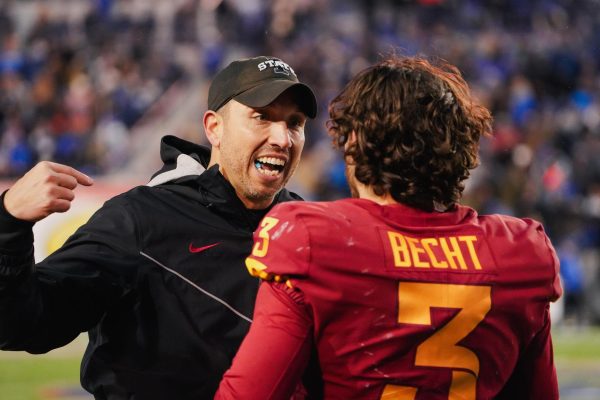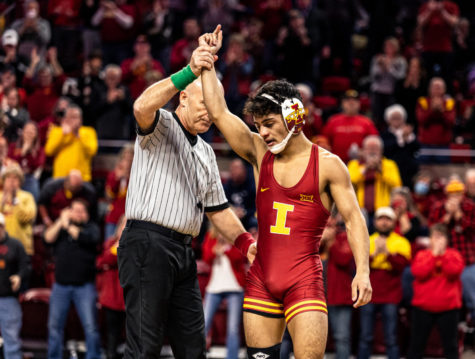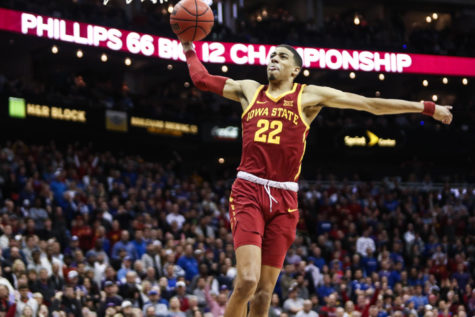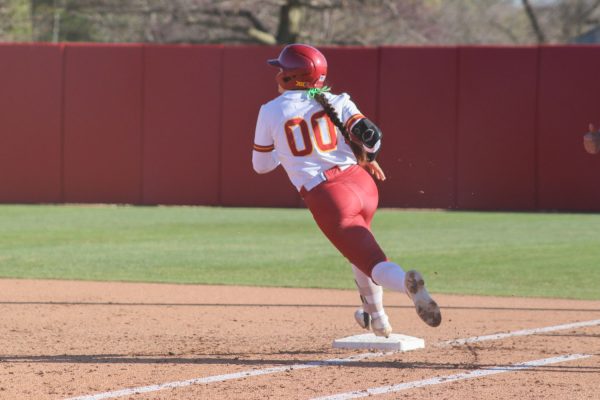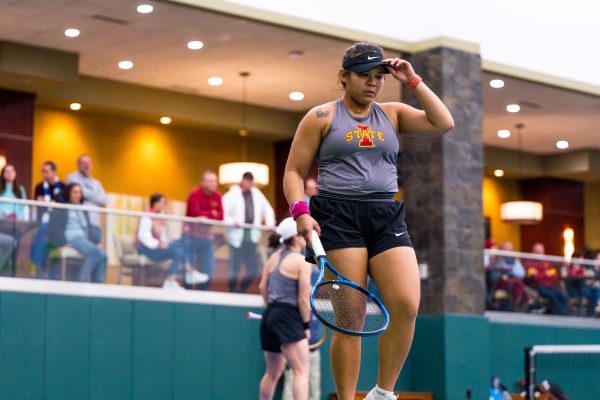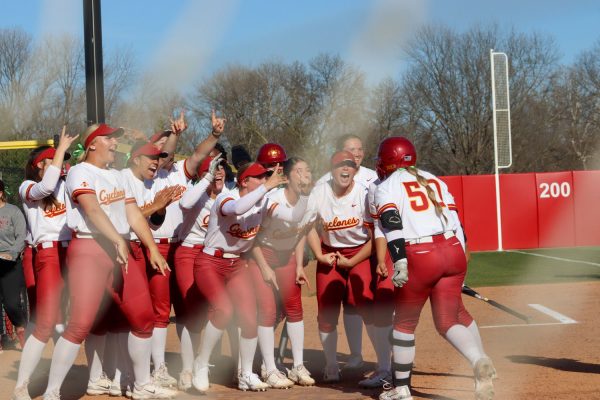Offense struggles in red zone
October 23, 2007
The ISU football team averages 15.1 points per game – the fourth worst total in the nation and worst in the Big 12.
But the ISU offense has been able to move the ball effectively at times this season, ranking ninth out of 119 Division I teams in time of possession, second in the Big 12. Last Saturday, the Cyclones (1-7, 0-4 Big 12) scored once despite driving inside Oklahoma’s 20-yard line four times.
“That killed us,” said senior Todd Blythe. “That’s really why we lost the ball game, because we weren’t able to put points up on the board when we had the opportunity . the defense played great; they held them to 17 points all game against one of the best teams and best offenses in the nation. As an offense, we need to do a better job of helping them out.”
Against 13th-ranked Missouri (6-1, 3-1) this weekend, Iowa State will need to take advantage of scoring opportunities to keep up with an offense that averages over 40 points a game.
The Cyclones have scored on 18 of their 25 red zone possessions (72 percent), but have converted just 12 of those into touchdowns (48 percent).
“We want to score 100 percent of the time when we’re down [in the red zone], whether it is a touchdown or a field goal,” said offensive coordinator Robert McFarland. “And the second goal we have in the red zone is to have 75 percent of those to be touchdowns.”
McFarland said getting into the red zone is the most important thing, as Iowa State had just four drives inside Texas Tech and Texas’ 20-yard line.
The Cyclones had scored on 17 of their 21 possessions (81 percent) in the red zone before playing Oklahoma – 11 of those touchdowns (52 percent).
ISU coach Gene Chizik said it seems when the team gets close to the end zone something happens to keep it out – whether it is a penalty, interception or a bad snap that kills the drive.
“It’s kind of happened every game,” Chizik said. “It’s kind of an enigma to me right now, to be honest with you. We tried to address it, we’ve tried to do things down there that we feel like will score, but it’s just not happening right now.”
Iowa State missed a 36-yard field goal, failed on a fourth-and-one running play, and had an interception midway through the fourth quarter against Oklahoma, all in the red zone.
The interception play, which came when the Cyclones were down 14-7, came when quarterback Bret Meyer threw a pass for an open receiver, but the ball was tipped at the line.
McFarland said everything happened as he wanted – R.J. Sumrall was open, Meyer saw him and released the ball right on time – but Oklahoma’s Curtis Lofton “got just enough of a fingertip” to tip the pass.
Players didn’t specific reasons for what goes wrong inside opponent’s territory.
“Really, I have no answer,” said freshman offensive lineman Ben Lamaak. “I don’t know. We move the ball so well, it’s just like when we get inside the 20, we’re having crucial penalties, turnovers and whatnot. So that’s something we really need to focus on in the remainder of the season.”
Lamaak said he thinks the focus of practice this week will be converting in the red zone. Sophomore wide receiver Marquis Hamilton said after the game last Saturday that the team seems to lose focus in the red zone.
“It just seems like we don’t execute as well when we get in the red zone, for whatever reason,” Hamilton said Monday. “But we execute pretty well from the 20 going into the red zone. So if we can maintain that level of focus, we can get it in there.”
Chizik and McFarland said the problem needs to be fixed by coaching.
Iowa State has also struggled to manufacture big plays to ignite the offense. The Cyclones have had only two touchdowns over 20 yards – a 38-yard catch-and-run and a 26-yard reception by Blythe.
Iowa State’s longest play of the year was a 39-yard pass from Meyer to Blythe – one of only four offensive plays over 30 yards this season.
“Everything that we do is kind of a methodical drive, and you know, again when you drive eight, nine, 10 plays, the chances of you stalling at the end of that drive right now are much higher than if you rip one down there from about 50 yards, which we haven’t been able to do,” Chizik said. “Again, that isn’t an excuse at all. We just haven’t been able to get it done.”






